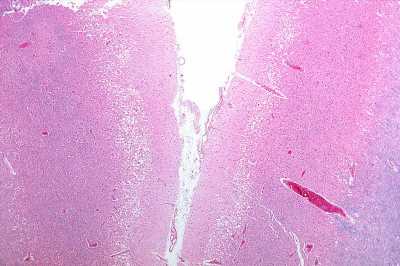Existing drugs point to first treatment for strokes linked to dementia

People who experience a type of stroke linked with nearly half of all dementias could be treated for the first time by repurposing two cheap and common drugs, a trial shows.
Researchers found that isosorbide mononitrate and cilostazol, which are already used to treat other heart and circulatory diseases, can safely improve the debilitating outcomes people experience after lacunar stroke.
The two drugs, which were found to be even more effective when used in combination, could be available as a treatment for lacunar strokes within five years, if the results are confirmed in further trials, experts say.
Lacunar strokes affect at least 35,000 people in the UK each year. They are caused by cerebral small vessel disease, where small blood vessels deep within the brain become damaged and stop working properly. Small vessel disease is also a common cause of cognitive impairment and dementia.
The strokes can be distressing as people may develop problems with their thinking and memory, movement, and even dementia. There are currently no specific effective treatments.
The trial, led by the Universities of Edinburgh and Nottingham and the UK Dementia Research Institute, involved 363 people who had experienced a lacunar stroke.
As well as their standard stroke prevention treatment, for one year participants took either isosorbide mononitrate or cilostazol individually, both drugs together, or neither.
The trial, funded by the British Heart Foundation, investigated cilostazol and isosorbide mononitrate as they possibly improve the function of the inner lining of blood vessels, which researchers believe play a role in small vessel disease.
Participants that took both drugs were nearly 20 percent less likely to have problems with their thinking and memory compared to the group that did not take either drug. They were also more independent and reported a better quality of life.
In addition, those who took isosorbide mononitrate were less likely to have had further strokes at one year than those who did not take the drug.
Taken on their own, isosorbide mononitrate also improved thinking and memory skills, and quality of life, while cilostazol improved independence and mood. These effects were strengthened when the two drugs were taken together, researchers say.
The team is now planning to test these drugs in a larger four-year clinical trial, which they hope to start by the end of 2023. They are also looking to test whether the drugs are effective in different conditions linked to small vessel disease, such as vascular cognitive impairment and dementia.
The findings are published in the journal JAMA Neurology. This work was also supported by the Alzheimer’s Society and Stroke Association.
Professor Joanna Wardlaw, Chair of Applied Neuroimaging at the University of Edinburgh and Foundation Chair at the UK Dementia Research Institute, said, “Now we understand more about what is triggering these small vessel strokes to attack the brain, we’ve been able to focus our efforts on treatments that can put a halt to this damage. We need to confirm these results in larger trials before either drug can be recommended as a treatment. However, as these drugs are already widely available for other circulatory disorders, and inexpensive, it shouldn’t take too long to move our findings from research into everyday clinical practice.”
Professor Sir Nilesh Samani, Medical Director at the British Heart Foundation, said, “These promising findings provide a long-awaited positive step towards the first treatments becoming available for lacunar strokes, offering much needed hope for thousands of people. Lacunar strokes are not the only way that cerebral small vessel disease can affect someone. These findings also open new avenues of research into other conditions related to small vessel disease, such as vascular dementia.”
More information:
Isosorbide Mononitrate and Cilostazol Treatment in Patients With Symptomatic Cerebral Small Vessel Disease, JAMA (2023). DOI: 10.1001/jamaneurol.2023.1526 , jamanetwork.com/journals/jaman … /fullarticle/2805321
Journal information:
Journal of the American Medical Association
,
Archives of Neurology
Source: Read Full Article
